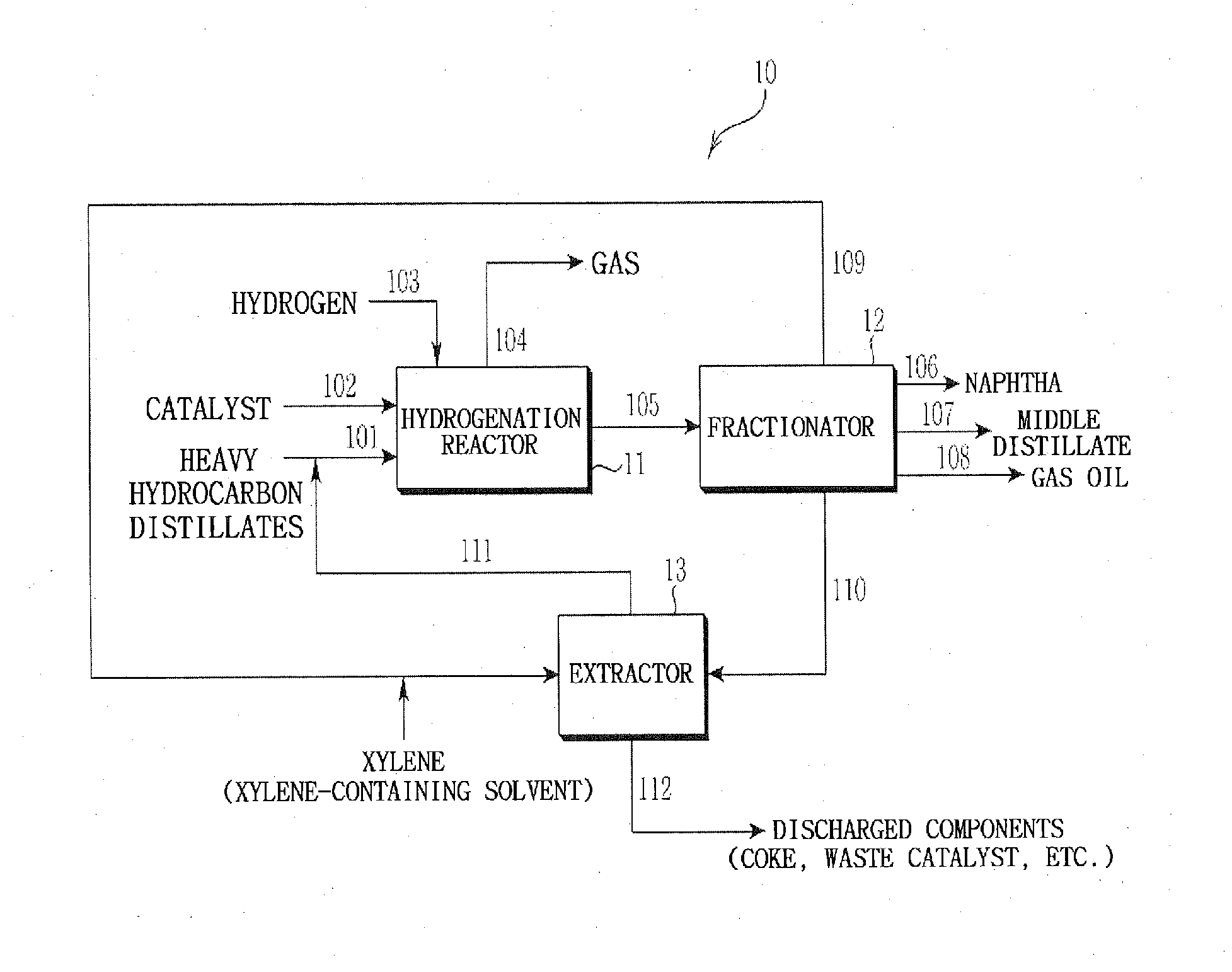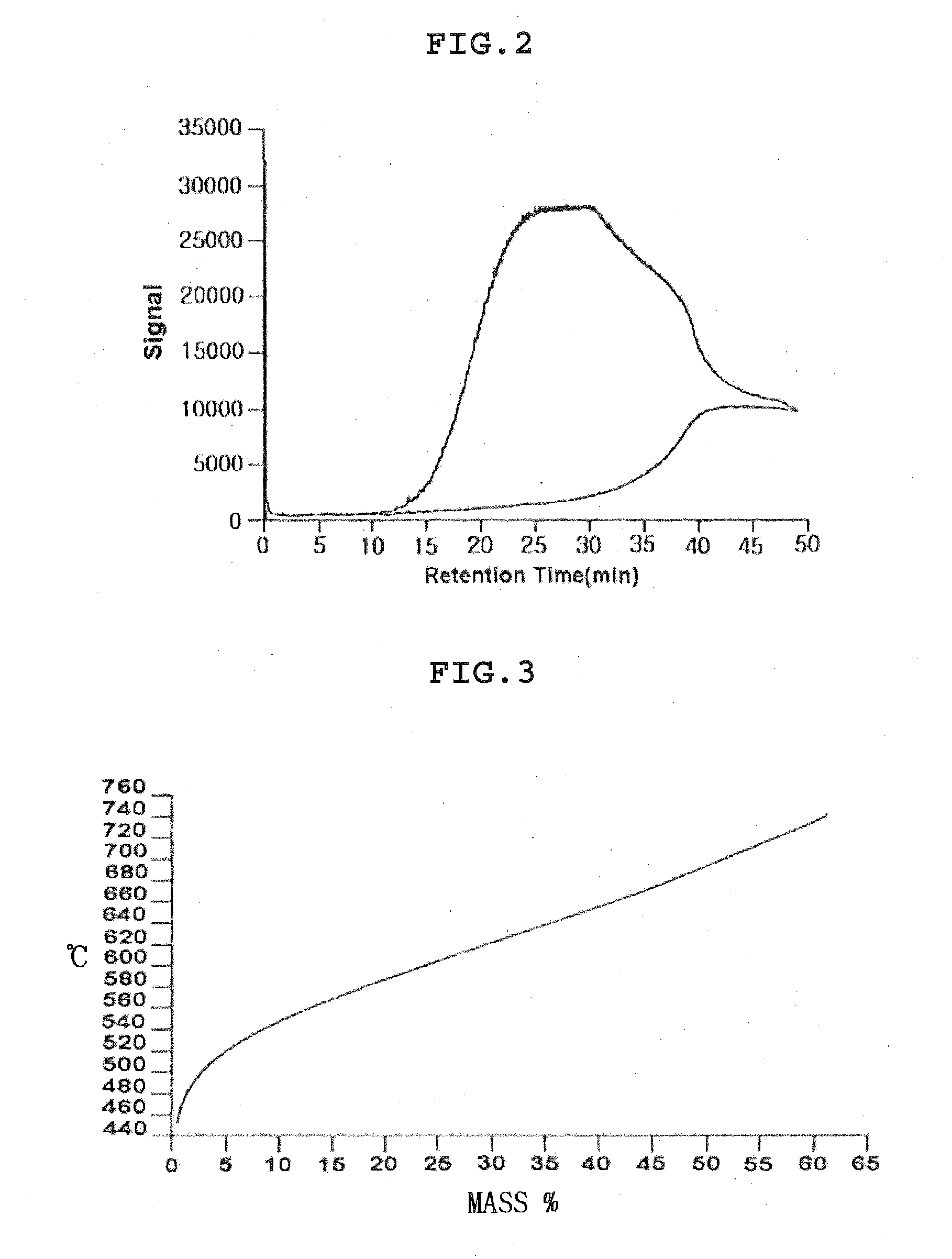Hydrocracking process of heavy hydrocarbon distillates using supercritical solvent
- Summary
- Abstract
- Description
- Claims
- Application Information
AI Technical Summary
Benefits of technology
Problems solved by technology
Method used
Image
Examples
example 1
[0096]Sample
[0097]In Example 1, a vacuum residue provided from a commonly-used process was used as a sample of a heavy hydrocarbon distillate. The sample was analyzed by the ASTM high-temperature SIMDIS, and the results thereof are shown in FIG. 2. The boiling point distribution characteristics of the sample are shown in FIG. 3.
[0098]As a result, the vacuum reside included 23.03 wt % or more of conradson carbon residue (CCR), and the amount of the vacuum residue that can be recovered at a high temperature of 750° C. was at most 62.6 wt %. Further, the vacuum residue included 96 wt % or more of pitch (i.e., boiling point: 524° C. or higher). The physical properties of the vacuum residue are shown in Table 2 below.
TABLE 2SolventDensityBoiling point (° C.)Tc (° C.)Pc (MPa)n-hexane0.65969234.53.020n-dodecane0.748216.4385.21.8toluene0.865110.7318.74.1m-xylene0.864137344.23.536o-xylene0.880144.4357.23.730p-xylene0.861138.4343.13.511Ethylbenzene0.867136.2343.13.701
[0099]As shown in Table 2...
PUM
 Login to View More
Login to View More Abstract
Description
Claims
Application Information
 Login to View More
Login to View More - R&D
- Intellectual Property
- Life Sciences
- Materials
- Tech Scout
- Unparalleled Data Quality
- Higher Quality Content
- 60% Fewer Hallucinations
Browse by: Latest US Patents, China's latest patents, Technical Efficacy Thesaurus, Application Domain, Technology Topic, Popular Technical Reports.
© 2025 PatSnap. All rights reserved.Legal|Privacy policy|Modern Slavery Act Transparency Statement|Sitemap|About US| Contact US: help@patsnap.com



